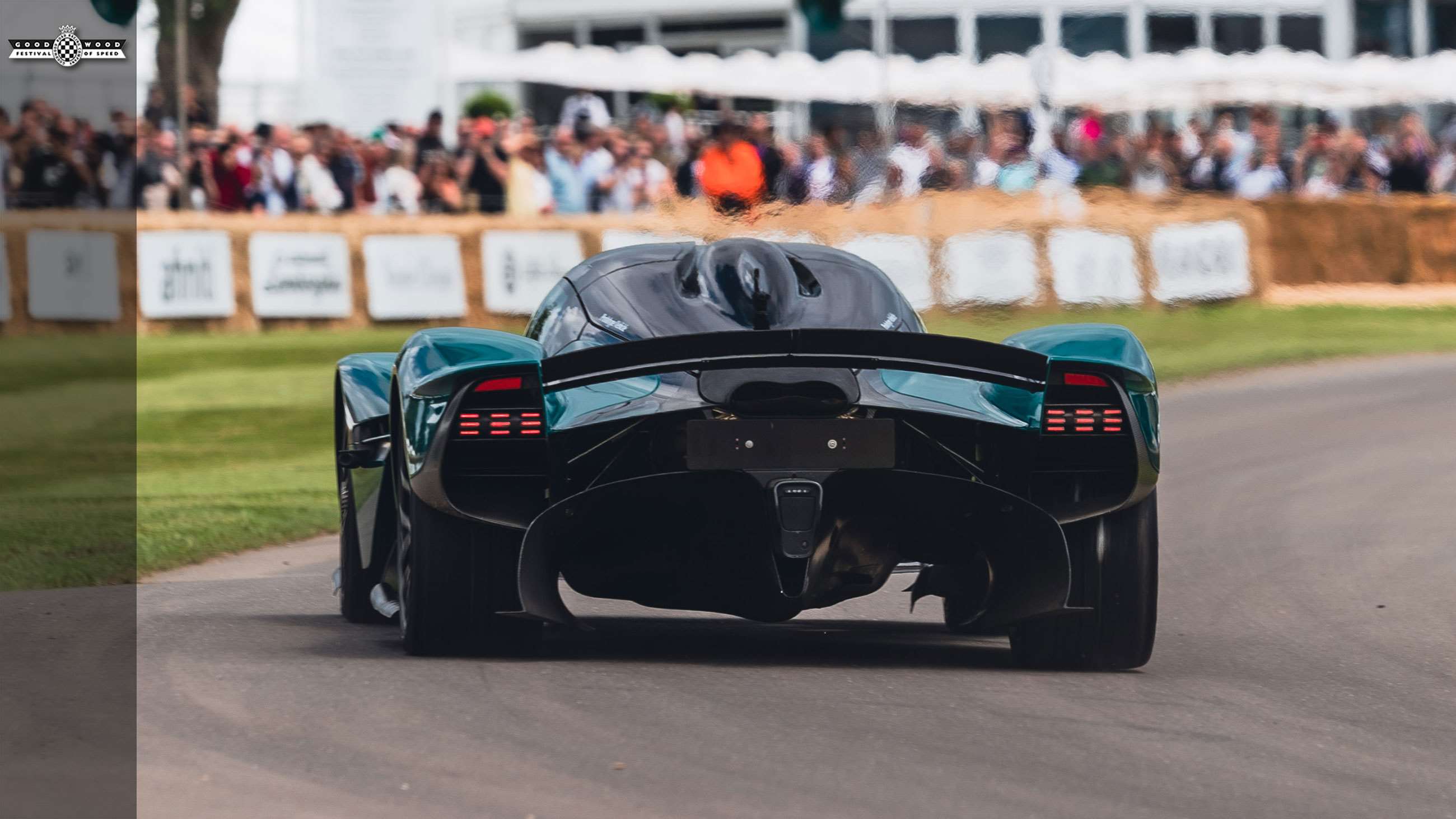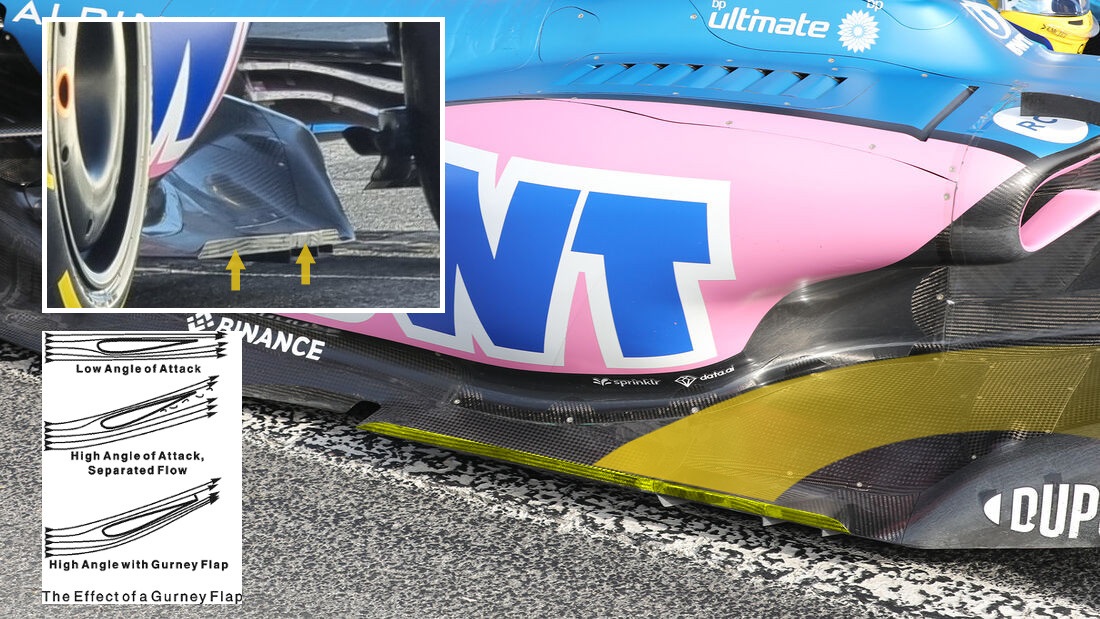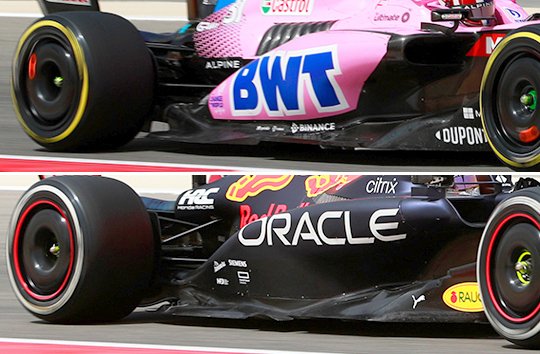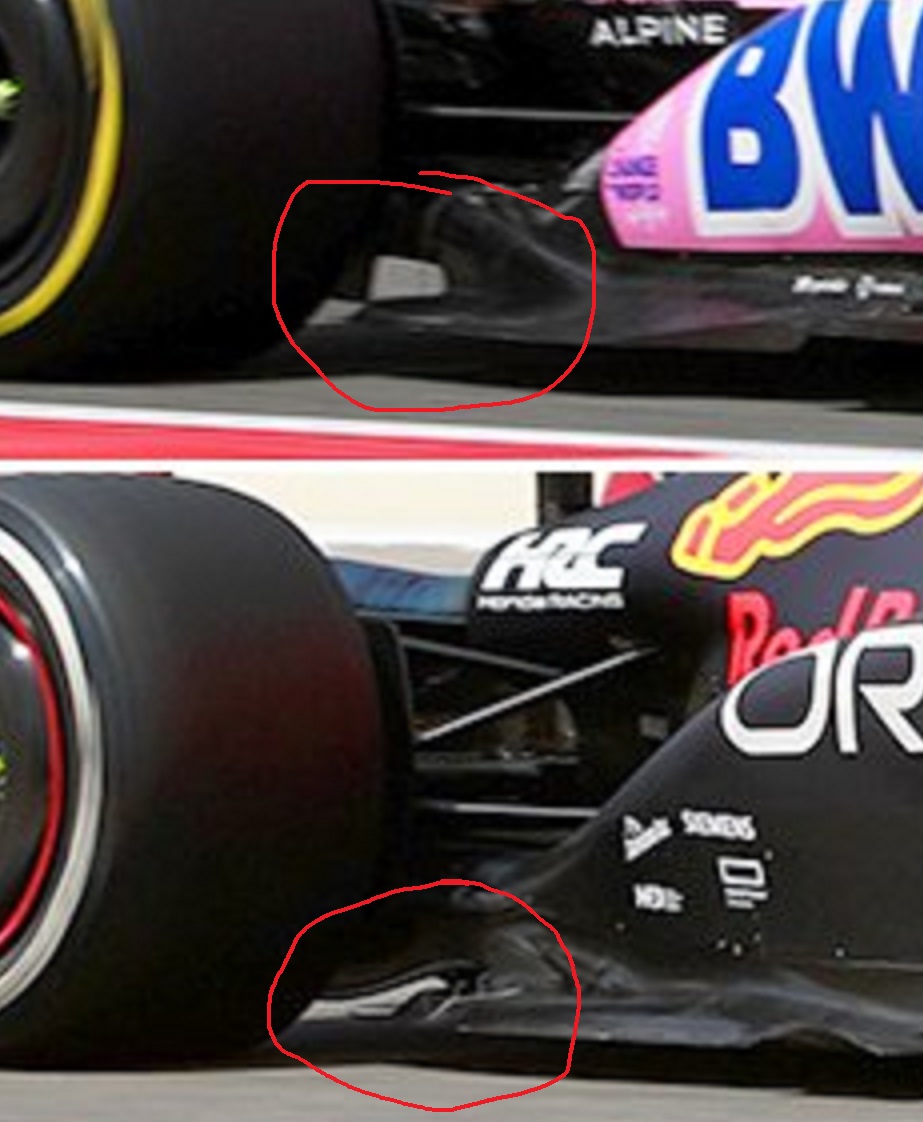But the floor fences release air from underneath the floor to a far greater extent than that ever could. The more air you push out of the floor, the more air you're drawing in. The cut outs help guide air under the edge wing. The strong low pressure that forms at the throat of the tunnel creates a strong acceleration of air into the diffuser. The edge wing can be turned into a nozzle that shoots air into the mouse hole opening flanking either side of the diffuser. The jet of air will combine with the jet of air coming from the throat and the plank area and further reduce the back pressure. The beam wing then accelerates the jet coming from the diffuser further reducing back pressure.diffuser wrote: ↑27 Mar 2022, 17:10Best Floor pics. Although helping with porpoising, I can't help but imagine that we're losing DF by releasing air from underneath the floor like this.
https://motorsport.nextgen-auto.com/pho ... ar/648.jpg
https://motorsport.nextgen-auto.com/pho ... ar/649.jpg
The noise that comes from the low pressure jet of air billowing into the diffuser creates noise, quarter wave tubes like these cutouts work well to suppress noise, as does lowering the back pressure of the diffuser because then the transition from the throat to the diffuser isn't as severe. You'd also reduce drag that way.
The diffuser is limited in its outwash potential but the beam wing has a lot of freedom, as does the rear wing. In the previous generation cars, the height limit of the diffuser was overcome by adding outwash to the upwash, the rules don't suddenly change even if the regulations make it more difficult. It just means you have to get more creative. The rules make upwash easy, but outwash difficult.
Say for instance the diffuser fences, they have to be pretty much straight. cambering it inward near the ground would create more upwash and outwash and lower floor back pressure.
If the rules allowed we'd see diffusers shaped more like this, curved inward at the end of the fences.













